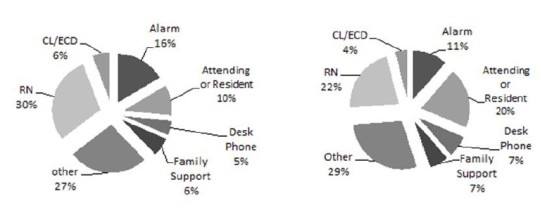“Insanity: doing the same thing over and over again and expecting different results.”
– Albert Einstein
This post applies specifically to nurses. I know it’s happened to you. Your patient is having a problem. You do a little troubleshooting, but you feel that a doctor needs to know and possibly take some action. So you page them and duly note it in the medical record. No response. You do it again, and document it. No response. And a third time, with the same result.
And now what? Call someone else? Give up and hope the patient improves?
What if the doctor on call is a known asshole? Are you even reluctant to call in the first place? Do you delay as long as you possibly can?
Believe it or not, I’ve seen many chart review cases over the years where this situation does arise. And every once in a while, the patient actually dies. Sometimes this is directly related to the lack of intervention, but sometimes it just sets the ball rolling that eventually leads to patient demise days or weeks later.
What’s the answer? We all want to provide the best care possible for our patients. But sometimes social factors (or pager malfunctions) just get in the way. Here’s how to deal with it.
Every hospital / nursing unit needs to have a procedure for escalating patient care calls to more advanced providers. When one of your patients develops a problem, you usually have a pretty good idea of what the possible solutions are. So call/page the proper person (PA/NP/MD) who can provide that solution. If they don’t give you the “right answer”, then question it. They are not all-knowing.
If they give you a good explanation, go with it, but keep your eye on your patient’s progress. If they can’t explain why they are giving you the wrong answer, suggest they check with someone more senior. And if they don’t want to, let them know that you will have to. Consider no answer the same as a wrong answer.
Don’t stop going up the chain of command until you get that right answer, or an explanation that satisfies you. The hard part here is going up the chain. You may not be comfortable with this. But you do have resources that can help you that have more authority (nurse manager, supervisor, etc). If they, too, are uncomfortable, then your hospital has much bigger problems (unhealthy workplace).
Example: trauma unit nurses at my hospital will call the first year resident first, then escalate to the junior and/or chief residents. If they don’t do the right thing, the in-house trauma attending gets the call. If they don’t handle it, then the trauma medical director (me) gets called. And, of course, I always do the right thing (chuckle). And our nurses know that the surgeons support them completely, since this facilitates the best patient care. The residents and PAs are educated about this chain of command when they first start on the trauma service, and it makes them more likely to choose the “right answer” since they know the buck may not stop with them.


